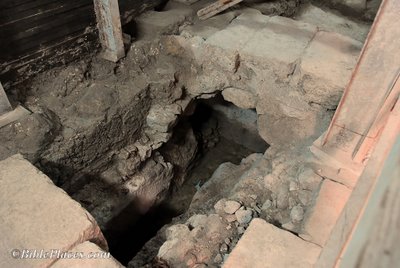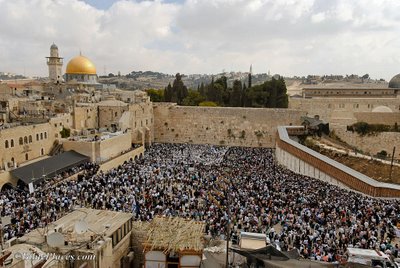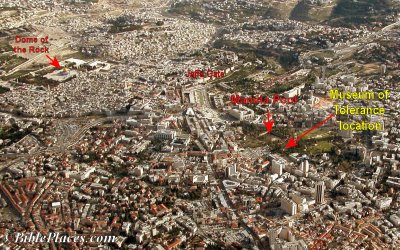The stupid article by Ynet News has been mentioned a few places in the blogosphere already (best take: Higgaion), but I want to add my two cents and a photo. I’m assuming that you’ve read the original article and Higgaion’s response.
1. I don’t think archaeologists are to be faulted here. I’d be willing to bet that this entire article is a figment of the author’s imagination, possibly stimulated by some of the local paid workers at the site. The only archaeologist cited is Ronny Reich who rejects the article’s premise. I don’t know any other archaeologists who would claim something so foolish, especially at such an early stage.
2. An aqueduct has been found. In fact, a number of aqueducts have been uncovered in the last few months. The origin(s), destination(s), and date(s) of these water channels are not always clear. Collectively, there’s a lot going on near the Pool of Siloam that archaeologists do not yet understand.
3. There is good reason to believe that there is another ancient pool or two to be found in the area. Pools mentioned in Jerusalem include the Old Pool (Isa 22:11), the Upper Pool (Isa 36:2), the Lower Pool (Isa 22:9), the King’s Pool (Neh 2:14), the Pool of Siloam (Neh 3:15), and the artificial pool (Neh 3:16). It’s quite possible that a pool had multiple names, but it’s clear that these names do not all refer to the same pool. The convergence of the Kidron, Central, and Hinnom Valleys is a natural place to find pools because this is the lowest place topographically in the city.
Does it bother anybody that the article’s author doesn’t even know where the City of David is in reference to the Western Wall (it’s directly south, not west). I confess that when I first read the article, I decided to ignore it because it was clearly worthless. I changed my mind because some people have paid attention to it.
One thing worth remembering: current excavations are uncovering new finds from the Second and First Temple periods that will certainly increase our understanding of Jerusalem’s water systems in the biblical times.



